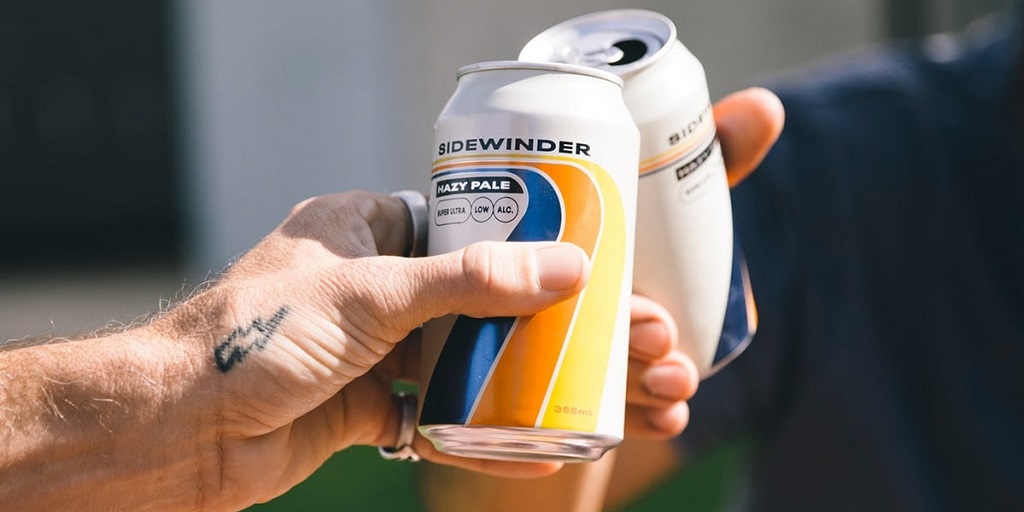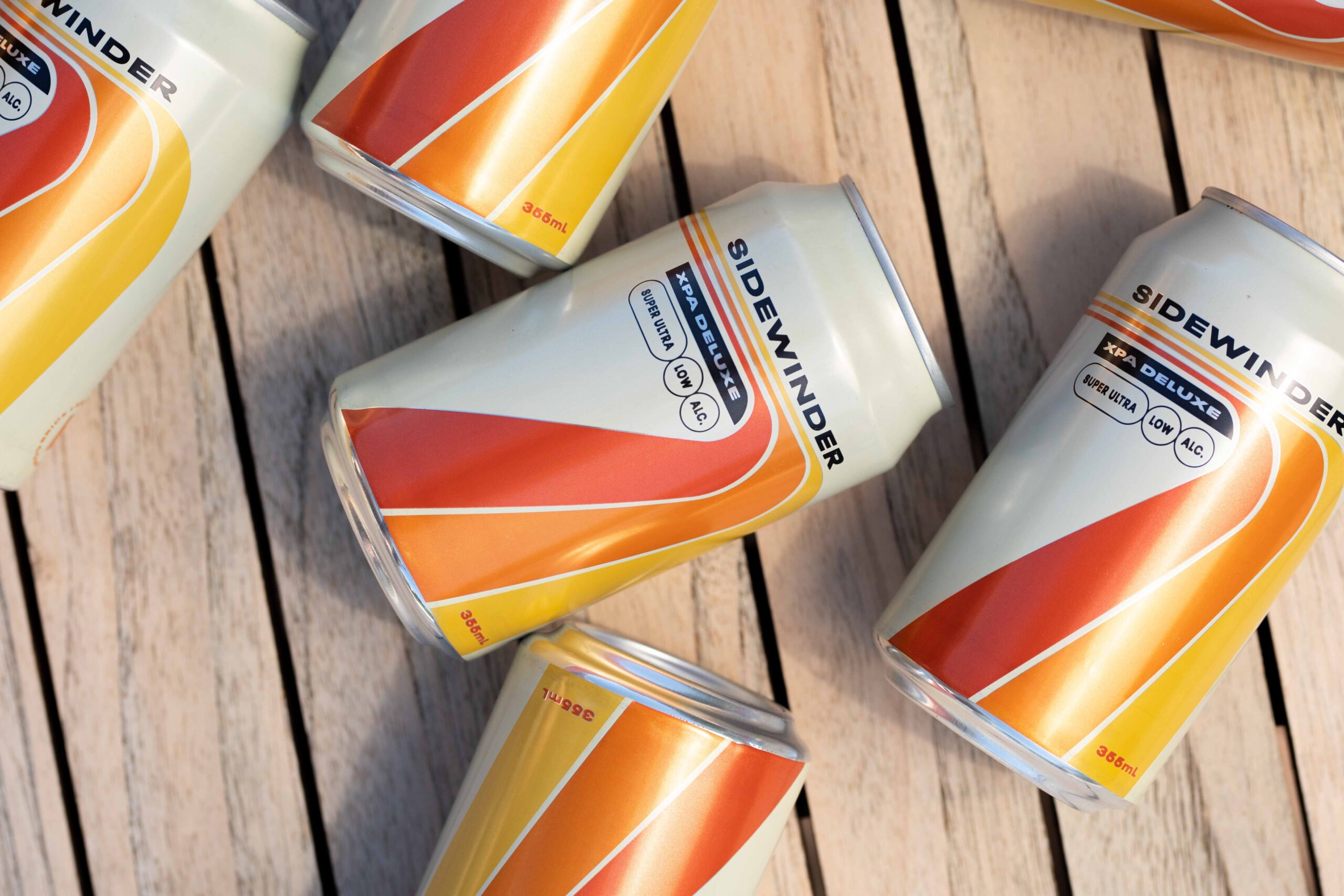
Brick Lane in brand battle
Brick Lane Brewing has launched legal action against the owners of the zero carb Better Beer over potential confusion with its Sidewinder beer brand.
Filing statements with the Federal Court of Australia’s NSW Registry in late December last year, Brick Lane argued that Better Beer has made false, misleading or deceptive representations, in breach of the Competition and Consumer Act 2010.
Brick Lane’s case argues that the similarities between the designs could cause confusion amongst consumers.
Torquay Beverage Company and its part-owned Better Beer brand as well as its parent company, ASX-listed Mighty Craft, are listed as respondents in the filing.
Brick Lane is seeking injunctions preventing the respondent companies from advertising, marketing or distributing Better Beer. It is also seeking corrective advertising, damages and court costs.
“As the case is currently underway, we’ll leave it to the legal process to determine the merits,” said Paul Bowker, managing director of Brick Lane.
Nick Cogger, founder of Torquay Beverage Company, said the company was “incredibly proud” of the brand and product it had created.
“It’s disappointing that two brands with original designs, who launch at roughly the same time, could be accused of copying each other,” said Cogger.
“[We] are focused on continuing to provide the product following its hugely successful launch.
“Unfortunately, I am unable to comment any further while this matter is before the courts.”
The beers
The joint venture Better Beer company was launched in July 2021. Torquay Beverage Company owns 60 per cent of the business whilst social media influencers The Inspired Unemployed own 40 per cent. It is brewed at Australian Brewing Co, a brewery co-owned by Casella Wines and Coca-Cola Europacific Partners.
Despite the company launching earlier in the year, it faced delays in bringing its product to market and Better Beer was not released in can format until November.
The beer brand has purportedly been successful for Mighty Craft, which reported late last year to the ASX that it expected to sell 3 million litres of beer in 2022. Endeavour Group, owners of the BWS and Dan Murphy’s retail chains, were quoted as saying it was the “most successful new brand beer launch” in 2021.
Like Better Beer, Brick Lane’s Sidewinder is also nationally ranged. Brick Lane began promoting the super low alcohol beer in July 2021, and by August, the beer was ranged online on Brick Lane’s website as well as 21 Dan Murphy’s outlets and First Choice Liquor Superstore.
Sidewinder is available in cases, four packs and singles, and is a lower abv choice, coming in at 1.1% abv, and was the first offering in the Sidewinder range, which now includes an XPA as well as its Hazy Pale.
The case
The crux of Brick Lane’s case centres around its claims of similarities in packaging and design of Sidewinder and Better Beer which could mislead or deceive customers.
Brick Lane’s initial statements claim that both have an off-white can, curving stripe designs in blue, yellow and orange, and the use of dark blue lettering. The brewery argued that it had acquired a reputation for its Sidewinder products amongst beer consumers in Australia, and that one or more of the respondents were aware of the Sidewinder products.
Brick Lane argued that the similarities in design could cause confusion amongst consumers, and imply that the beers were the same or related, or that Better Beer was endorsed, licensed or sponsored by Brick Lane.
Brick Lane contends that there could be a real risk of consumer harm, as Sidewinder has a low alcohol content (1.1% abv) compared to Better Beer, a 4.2% abv full-strength beer.
Andrew Sutton, Senior Associate at law firm Lavan, explained that the first thing to look at is that the claim relates to misleading conduct, rather than it being directly a claim relating to trade mark infringement or intellectual property.
According to the IP Australia trade mark register, there are currently trade mark applications pending and awaiting advertisement for elements of the “Sidewinder” product’s packaging, including its stylised stripes in a number of different colours.
Similarly, Torquay Beverage Company has also filed trade mark applications for elements of its packaging, including, its own stylised stripe device.
“So they are taking steps to ensure that the stylised parts of their packaging are protected, but the applications are not registered yet,” explained Sutton.
“[As] there’s no registered trade mark yet for the packaging of either beer, neither party can sue for trade mark infringement.”
However the court will assess the claim based on a number of factors which are frequently considered in relation to intellectual property and trade mark infringement cases.
“The test in this case is whether the conduct is likely to mislead or deceive, and the court must consider the likely class of people who will purchase the beer from wholesalers and retail, so a fairly large number of the population. The court must determine the effect the similar packaging might have on the decisions this specific class of consumers will make.
“Placing the two products side by side, the various elements comprising the packaging will be considered to determine the overall impression it will leave on the public. These elements may include the off-white background, the stylised striped device in similar colours, the font used, the product name as well as the composition of these elements on the packaging itself.”
“The court will consider all of these elements to determine whether the rival packaging will mislead customers into believing (in error) that, that it is associated with Brick Lane’s product. Is there a real, tangible risk of confusion there?”

The court may also consider industry-wide practices, explained Sutton.
“The court may consider evidence of the beer industry, including whether stiped devices are commonly used on packaging, whether off-white backgrounds are commonly used on cans and whether the products are targeting the same class of consumer.”
“One’s a light beer, the other is full strength. This may lead to questions such as whether the products are of similar price, sit apart on store shelves and/or target a different type of consumer. All these questions may be relevant when considering whether consumers may be misled.”
So the case is not as clear-cut as it might first appear.
“Assuming it goes to trial, which most matters don’t, it will be a very interesting decision. To the lay observer the products have clear similarities and differences. It’s one of those claims where you’re not sure which way it will go, because there’s no science to this. The court will need to form a view from the evidence put before it.”
However, Sutton did explain that the case highlights the importance of trademarking to protects brands.
“It’s important to consider trademarking everything you can, not just your brand but also distinctive aspects of your packaging, so if you have to bring action you can sue for infringement.”
“However, even with a trade mark, Brick Lane still might not have succeeded, as the Court would need to determine several factors, including whether the offending mark was deceptively similar.”
“But trade mark infringement can be a tidier cause of action to bring, compared to misleading and deceptive conduct claims,” Sutton explained.
The issues
The court case is not the first in the industry involving IP and competition.
In recent years, Urban Alley undertook a legal battle against fellow Melbourne brewery La Sirène over its Urban Ale trademark which was subsequently cancelled by a judge, and Stone & Wood settled a Pacific Ale trade mark dispute case against Thunder Road after three years of litigation in 2018.
But these cases highlight the increasingly competitive nature of beer in Australia, with brewers targeting a finite number of customers and frequently coming up with new ways to expand market share, from breaking into macro-style lagers to engaging in major national advertising campaigns.
In this landscape, branding and marketing has never been more important.
“The beer market in Australia, although highly competitive, has a great sense of community and most are looking to grow the category as a whole through investing in new ideas and innovation not just in beer itself, but also in packaging, design and insights into new segments,” Brick Lane’s Paul Bowker said.
“Branding, design and packaging gives every brewery, large or small, the opportunity to express their brand direct to their customers and consumers.
“This creates long term equity in their relationships with consumers as well as creating long term value in their brewery brand.
“For the owners of many breweries, a large amount of the value for the years of hard yards in building a business is held through the ownership of the distinctive brand assets they have created.
“We see it as important that the integrity of the market is maintained, breweries continue to invest in innovation and design and customers and consumers are not mislead or deceived by other products in the market.”





